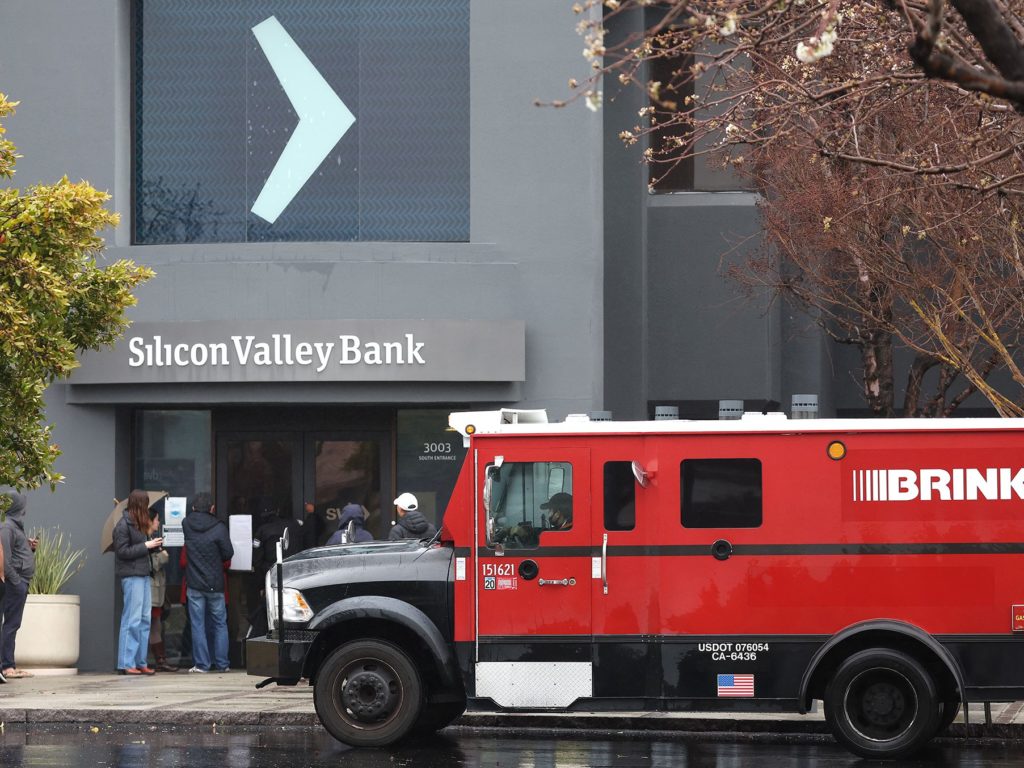Déjà Vu
The collapse of a bank
By Dominique Jacquet

The most musically inclined amongst us have recognized the title and were thrilled listening to the second album of the famous CSNY (Crosby, Stills, Nash & Young for the ignorant) released in 1970. The year is important because it announces the approaching end of an economic and financial era during which the dollar was attached to what Keynes called the barbaric relic, namely the gold standard.
I will come back to this historical point at the end of the blog. Let’s come to the financial news, namely the debacle of an institution useful for start-ups and which, at first sight, did not carry out complex arrangements to the detriment of its customers, the now famous Silicon Valley Bank (SVB). The world is worried about a potential spread of the liquidity crisis to the entire financial system and there is talk (Déjà Vu) of the return of Subprime and other memorable crashes. It would seem that the mode of operation of the SVB is actually quite “rustic”. The bank receives deposits for a significant amount (around 200 billion dollars), often from start-ups which have just raised substantial funds, to invest them in US Treasury bonds, which is not a very risky strategy.
A brief detour on the concept of bond risk. An asset is said to be “risk-free” if the probability that it does not generate the expected cash flows is negligible. In the case of a government bond, the rating of the sovereign debt gives an indication (an opinion…) of the probability of default, i.e. the probability of being unable to pay the coupons and/or principal. As far as the USA is concerned, the risk is almost nil, so the bank was not taking any risk. Unfortunately, it is more complicated, because the concept of liquidity comes into play. In order to cover its expenses, the SVB placed the deposits in long-term bonds whose rate of return was higher than the 3-month T-Bills. In doing so, it carried out an activity well known to bankers, the transformation of deposits into credit. Lending to the US government is not a problem, unless interest rates rise dramatically, which does not alter bond risk, but significantly reduces the resale value of the debt (remember, the concepts of sensitivity and duration!). To recover the capital of the bond, you must not sell it, but wait for maturity (ultimate repayment at the end of the contract). However, the (well-founded) rumors of SVB’s difficulties rationally led depositors to run to the bank (bank run) to recover their funds. The last time was Northern Rock in 2008…
In the absence of inflation and rising rates, there would (apparently) have been no problem. Therefore, the responsibility must be sought at the level of the central banks which increased the rates to curb inflation… Incidentally, well aware that this would happen one day, the States massively borrowed at fixed rates over very long periods in order to reduce the future cost of indebtedness and to make the debt disappear through the most effective tax, inflation. Inflation is taxation without legislation said Milton Friedman…
We are rediscovering inflation today, but the phenomenon is well known and has been widely documented. Uncontrolled increase in the money supply, budget deficits, instability of commodity prices, various uncertainties, particularly in international relations: all the ingredients are now in place to ensure that this economic process has a life that is likely to be prolonged. Therefore, to annihilate inflation, the economy must be cooled by increasing the cost of liquidity and, thus, by reducing the money supply. Monetary policy is driven by the level of interest rates. It has not always been the case. I remember my years as treasurer of a firm that sold equipment and ensured its financing. Access to liquidity was very controlled and we had a fairly large portfolio of committed lines of credit which cost around 0.5% per year of the unused part of the line. We had to pay this price to be certain of refinancing our leasing activity. Then, the credit limitations disappeared, the regulation of the money supply now being done by rates. Cautious, we kept the lines, but renegotiated the rates which were divided by 4.
On what principle should the evolution of the financing of the economy be regulated? Money is a liability of a central bank. Hence the interest of having a robust and lasting asset provided as collateral to the holders of the liabilities to guarantee the currency, which limits its progress accordingly. Some states used their stock of gold metal as collateral. Weak growth in the volume held, therefore, assured discipline of the growth of the money supply and serenity of the holders of the liquidity reassured by the convertibility. In December 1971, barely a year after the publication of Déjà Vu, Nixon abandoned gold convertibility and created the dollar standard. Increase in the money supply, thus making available considerable funds to form the inefficient conglomerates of the 1970s, deregulation in the 1980s and a wave of hostile takeovers with even more funds available to finance acquisitions, development of derivatives and structured products, 1987 crisis, creation and bursting of the internet bubble, rescue of the economy by the budget deficit, Subprime, liquidity so abundant that it leads to a collapse in interest rates and inflation on assets ( real estate and stock markets), general inflation, rising interest rates and… SVB (and other banks with significant holdings of sovereign debt…).
Some countries are buying gold metal massively, well beyond identified short-term needs. Is it to prepare for a return to gold convertibility, which is reviled by many economists? Is it to prepare for the end of the dollar standard as a marker of their own economic power?